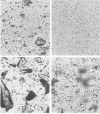Abstract
Biological studies of two titanium dioxide polymorphs, rutile and anatase, have produced conflicting results. Generally, the in vivo and in vitro methods used to evaluate pneumoconiotic dusts have shown the polymorphs to be inert, but occasionally both minerals have been reported to produce effects consistent with biologically active minerals. Many of these reports failed to specify which polymorph was used experimentally. While this limited the value of the data, the problem was further compounded by the variation in the surface properties of each polymorph depending on whether the specimen was a naturally occurring mineral or was made synthetically. Five naturally occurring and 11 synthetically produced titanium dioxide specimens were studied. The physical characterisation of each specimen entailed the determination of the polymorph type(s) by continuous scan x ray diffraction and the size distribution by transmission electron microscopy. The ability of each specimen to lyse erythrocytes was determined and compared with quartz. Only two, both synthetic rutiles, were found to be active. The hydrogen bonding ability of the surfaces of these rutiles were compared with inert rutile and quartz. The binding properties of the active rutile have been found to be consistent with those properties associated with biologically active quartz. The surface properties of rutile are the determinants of its activity. Because natural and synthetic rutiles possess different surface properties, they display different activities.
Full text
PDF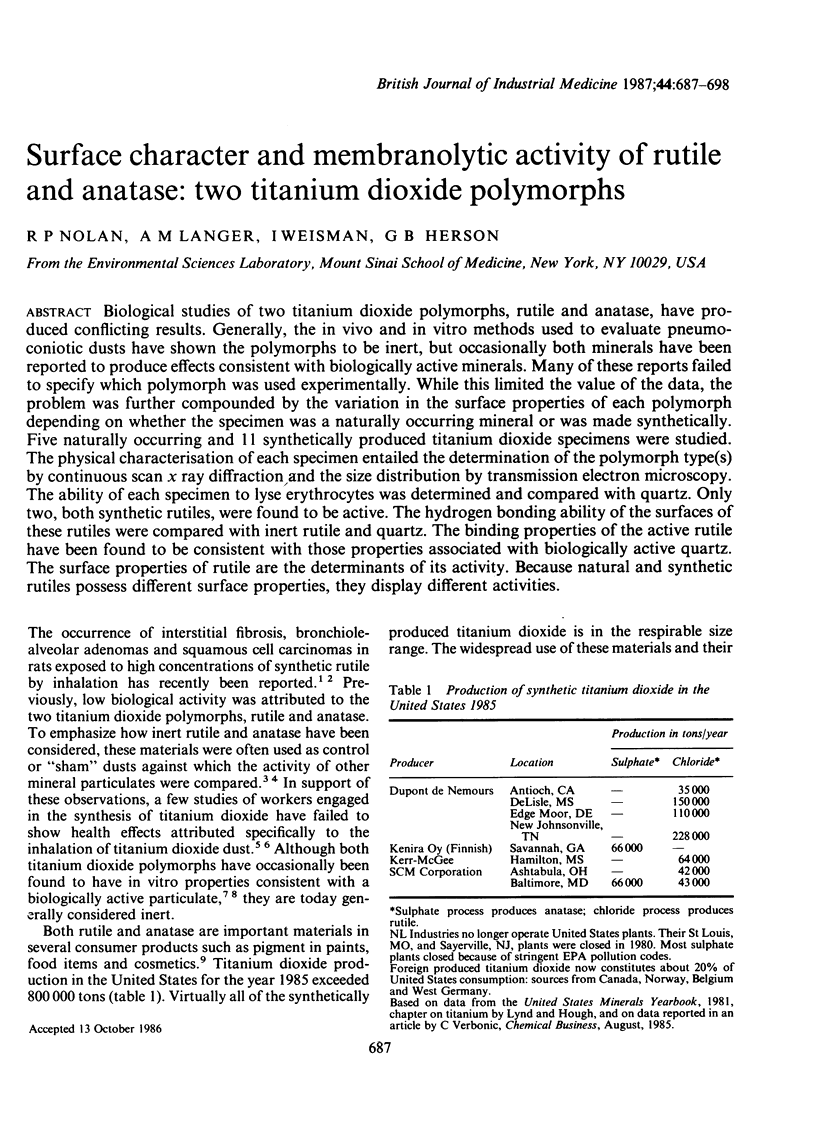
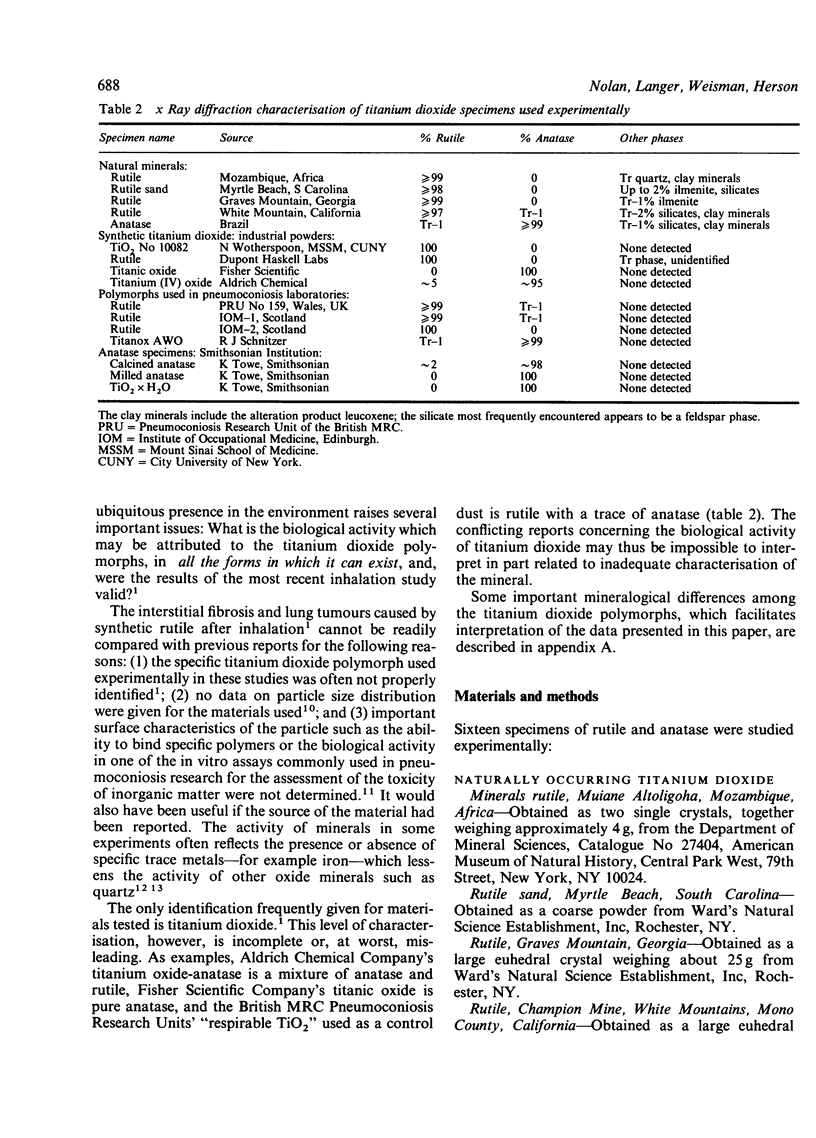
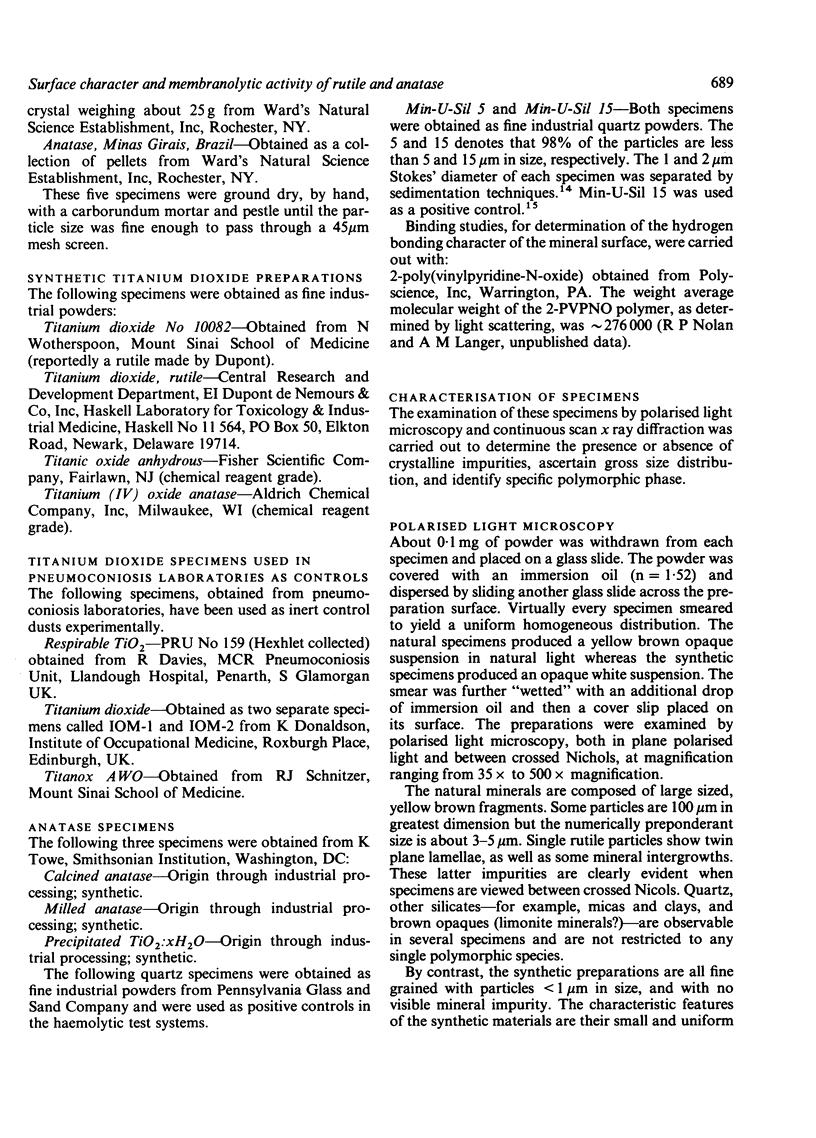
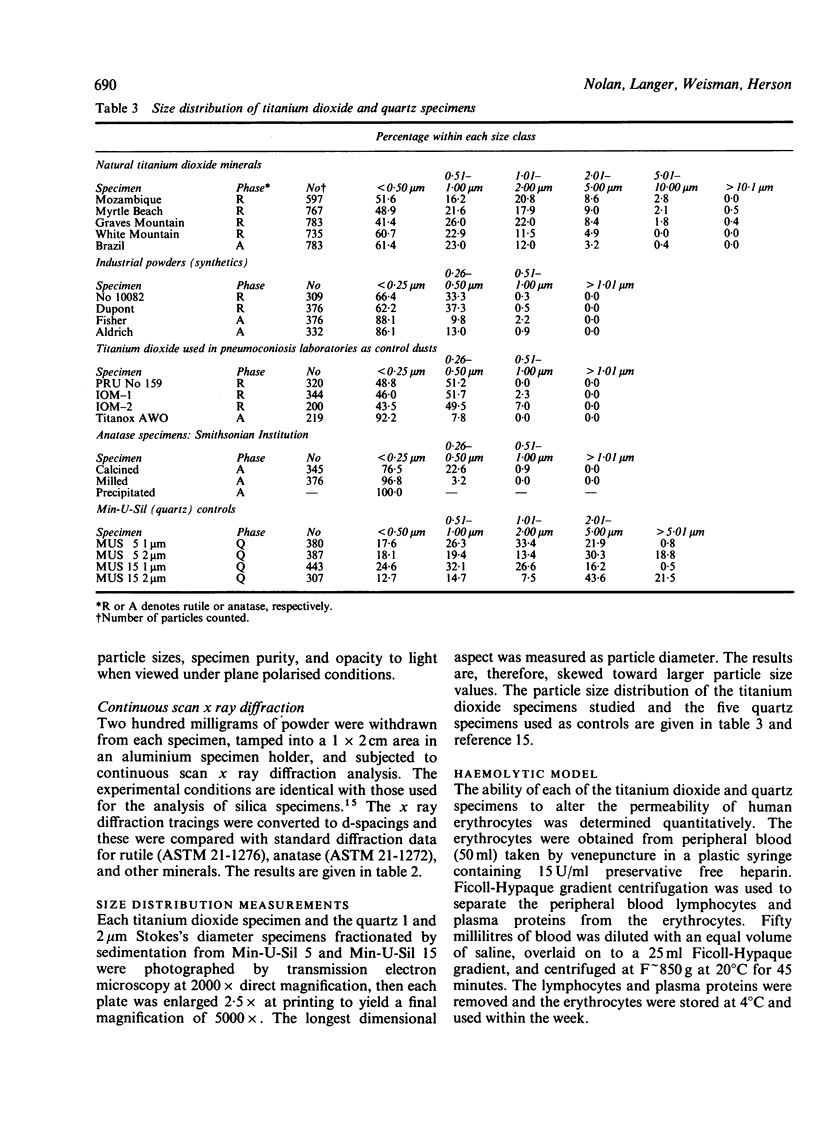
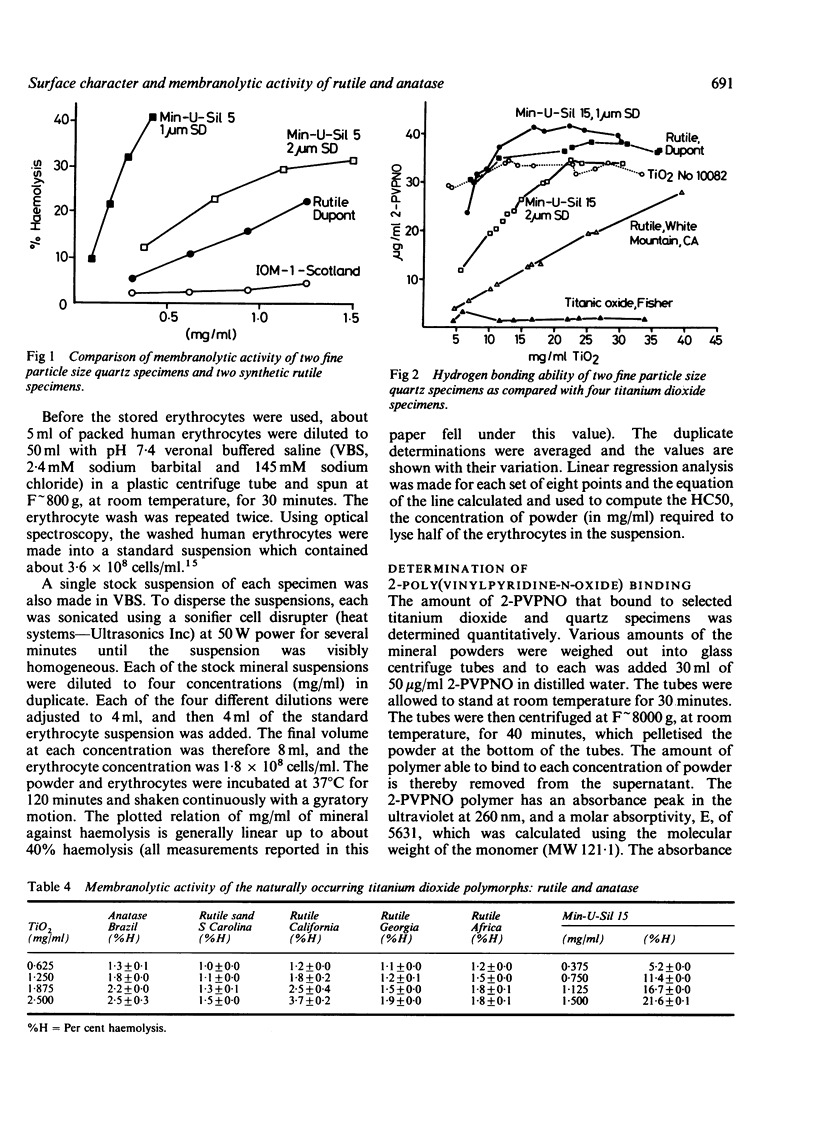
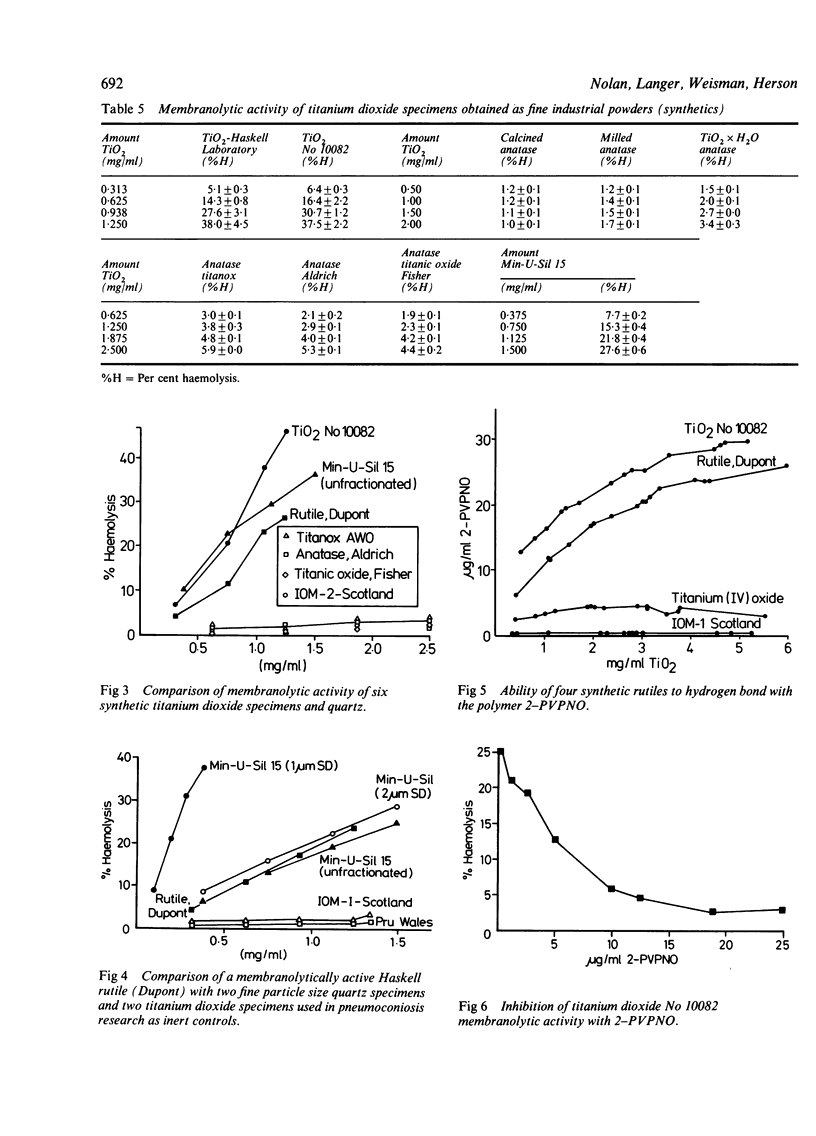
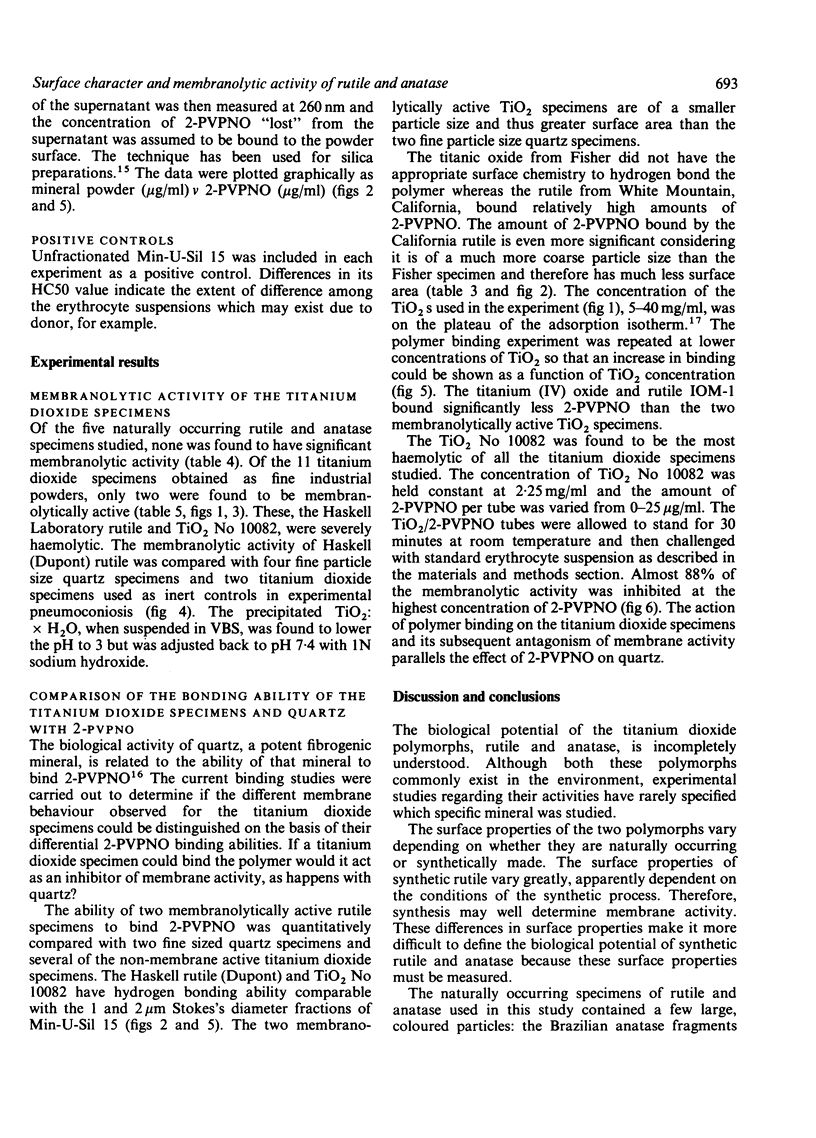
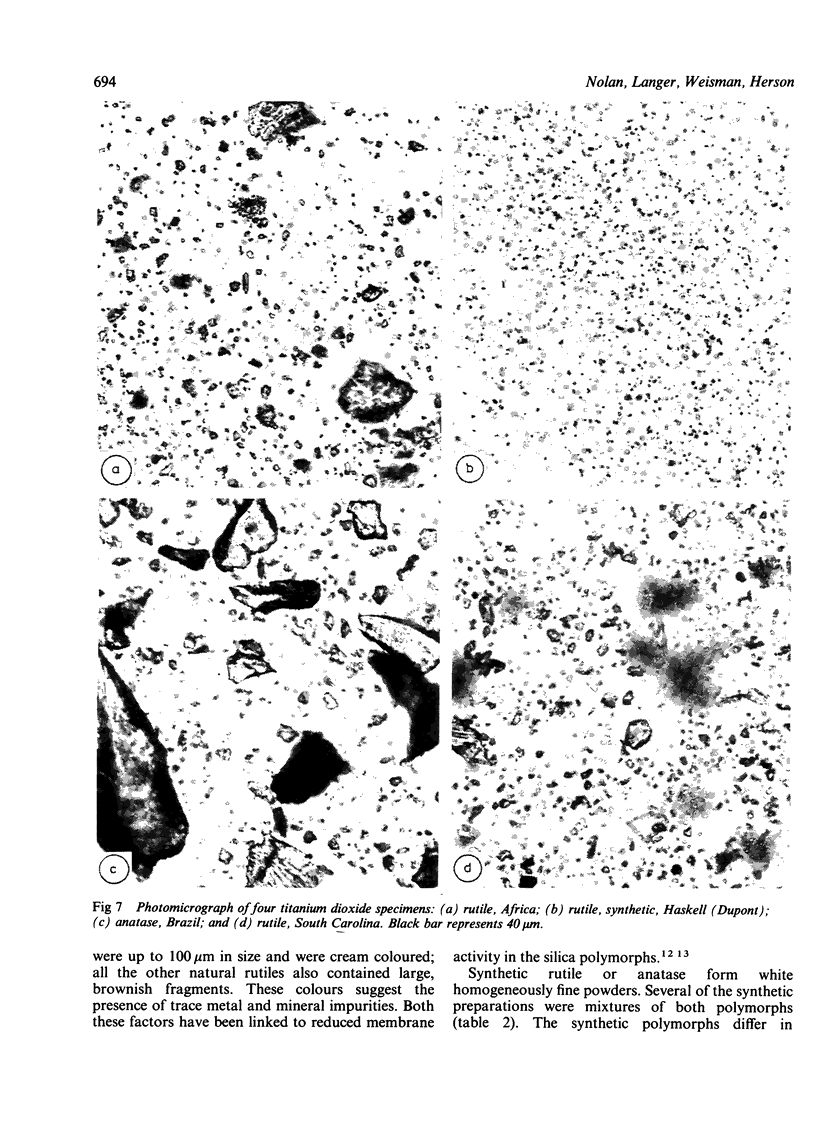
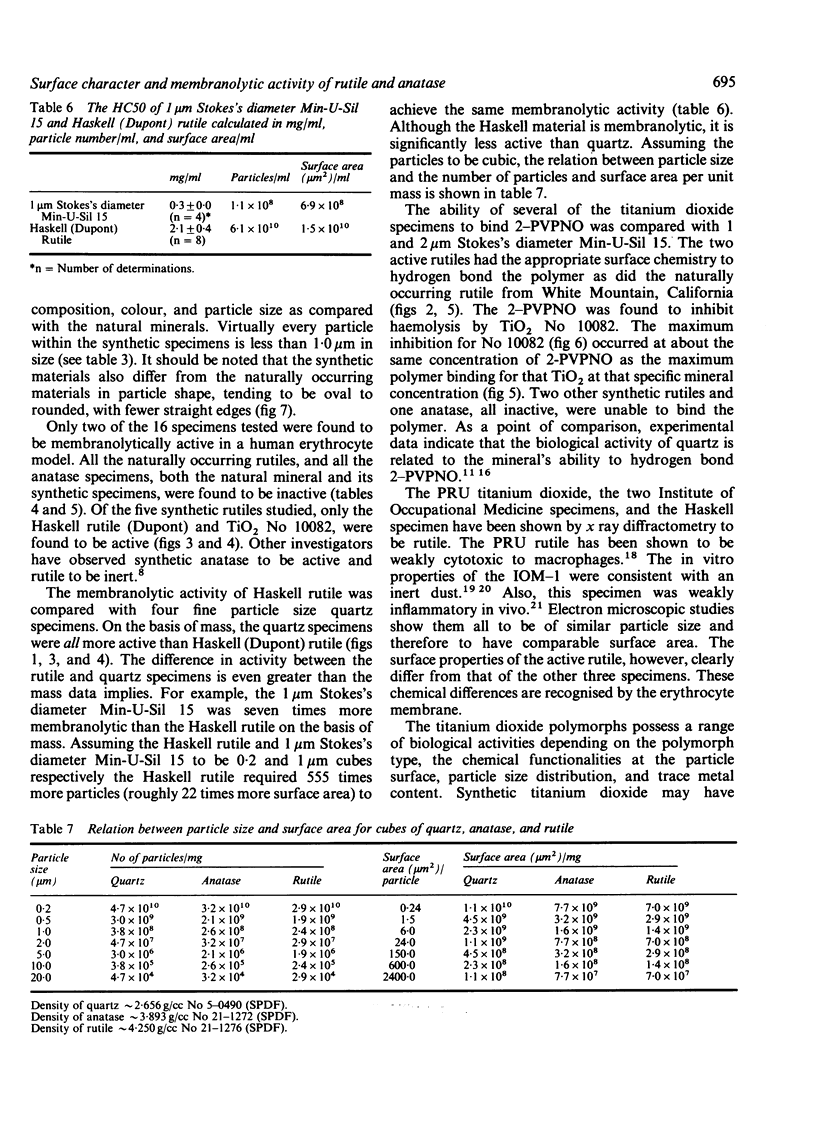
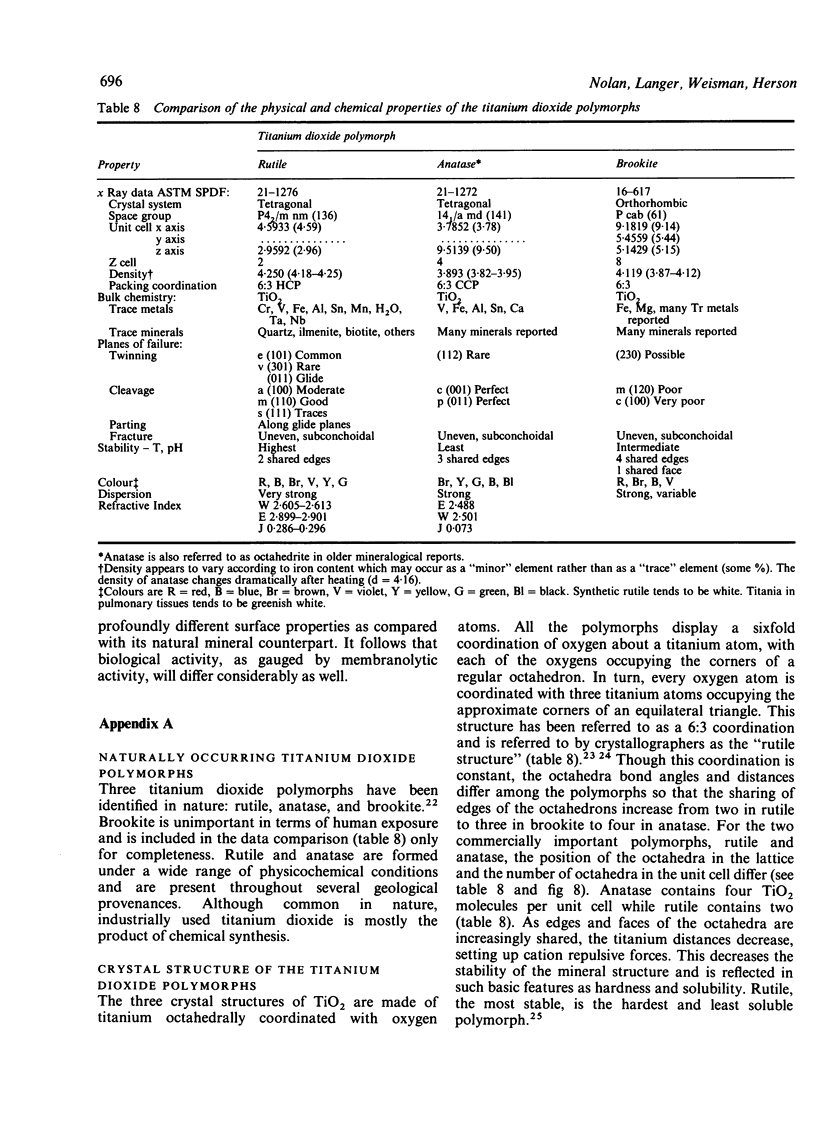
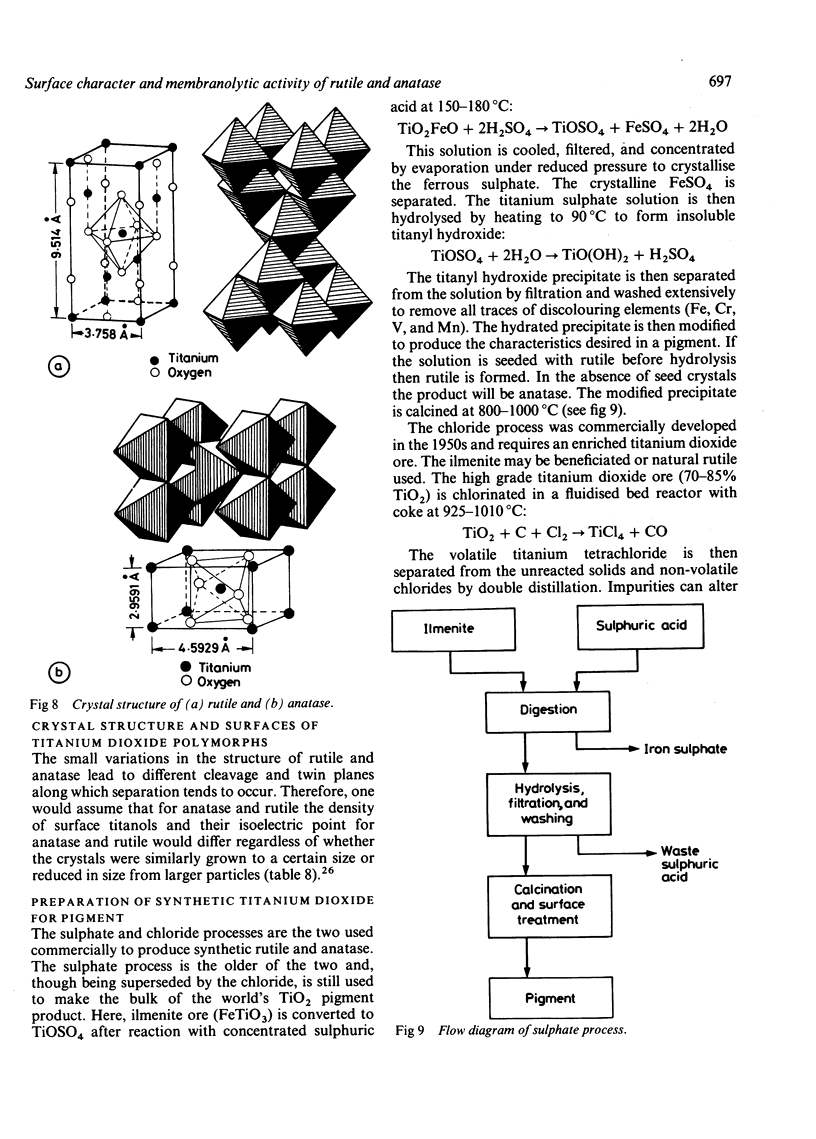
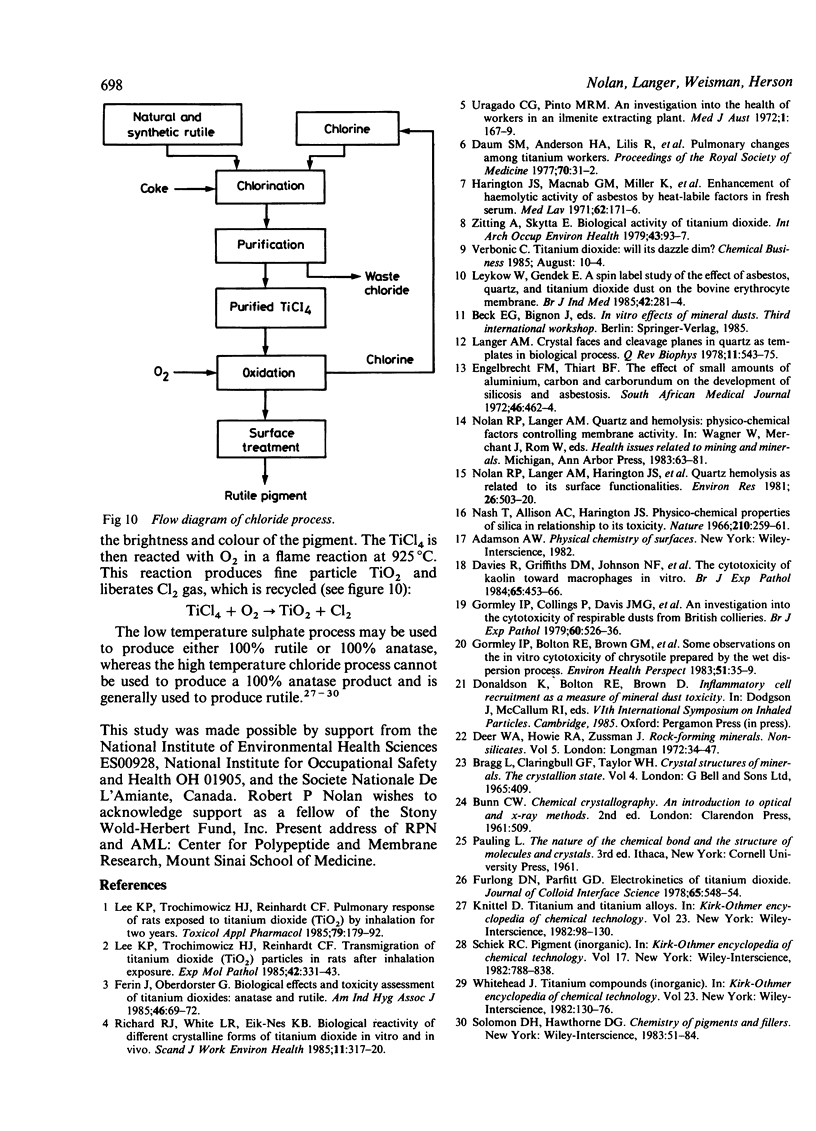
Images in this article
Selected References
These references are in PubMed. This may not be the complete list of references from this article.
- Davies R., Griffiths D. M., Johnson N. F., Preece A. W., Livingston D. C. The cytotoxicity of kaolin towards macrophages in vitro. Br J Exp Pathol. 1984 Aug;65(4):453–466. [PMC free article] [PubMed] [Google Scholar]
- Ferin J., Oberdörster G. Biological effects and toxicity assessment of titanium dioxides: anatase and rutile. Am Ind Hyg Assoc J. 1985 Feb;46(2):69–72. doi: 10.1080/15298668591394419. [DOI] [PubMed] [Google Scholar]
- Gormley I. P., Bolton R. E., Brown G. M., Davis J. M., Wright A. Some observations on the in vitro cytotoxicity of chrysotile prepared by the wet dispersion process. Environ Health Perspect. 1983 Sep;51:35–39. doi: 10.1289/ehp.835135. [DOI] [PMC free article] [PubMed] [Google Scholar]
- Harington J. S., Macnab G. M., Miller K., King P. C. Enhancement of haemolytic activity of asbestos by heat-labile factors in fresh serum. Med Lav. 1971 Apr;62(4):171–176. [PubMed] [Google Scholar]
- Langer A. M. Crystal faces and cleavage planes in quartz as templates in biological processes. Q Rev Biophys. 1978 Nov;11(4):543–575. doi: 10.1017/s0033583500005667. [DOI] [PubMed] [Google Scholar]
- Lee K. P., Trochimowicz H. J., Reinhardt C. F. Pulmonary response of rats exposed to titanium dioxide (TiO2) by inhalation for two years. Toxicol Appl Pharmacol. 1985 Jun 30;79(2):179–192. doi: 10.1016/0041-008x(85)90339-4. [DOI] [PubMed] [Google Scholar]
- Lee K. P., Trochimowicz H. J., Reinhardt C. F. Transmigration of titanium dioxide (TiO2) particles in rats after inhalation exposure. Exp Mol Pathol. 1985 Jun;42(3):331–343. doi: 10.1016/0014-4800(85)90083-8. [DOI] [PubMed] [Google Scholar]
- Leyko W., Gendek E. A spin label study of the effects of asbestos, quartz, and titanium dioxide dusts on the bovine erythrocyte membrane. Br J Ind Med. 1985 Apr;42(4):281–284. doi: 10.1136/oem.42.4.281. [DOI] [PMC free article] [PubMed] [Google Scholar]
- Nash T., Allison A. C., Harington J. S. Physico-chemical properties of silica in relation to its toxicity. Nature. 1966 Apr 16;210(5033):259–261. doi: 10.1038/210259a0. [DOI] [PubMed] [Google Scholar]
- Nolan R. P., Langer A. M., Harington J. S., Oster G., Selikoff I. J. Quartz hemolysis as related to its surface functionalities. Environ Res. 1981 Dec;26(2):503–520. doi: 10.1016/0013-9351(81)90226-7. [DOI] [PubMed] [Google Scholar]
- Richards R. J., White L. R., Eik-Nes K. B. Biological reactivity of different crystalline forms of titanium dioxide in vitro and in vivo. Scand J Work Environ Health. 1985 Aug;11(4):317–320. doi: 10.5271/sjweh.2217. [DOI] [PubMed] [Google Scholar]
- Uragoda C. G., Pinto M. R. An investigation into the health of workers in an ilmenite extracting plant. Med J Aust. 1972 Jan 22;1(4):167–169. doi: 10.5694/j.1326-5377.1972.tb46734.x. [DOI] [PubMed] [Google Scholar]
- Zitting A., Skyttä E. Biological activity of titanium dioxides. Int Arch Occup Environ Health. 1979 Apr 20;43(2):93–97. doi: 10.1007/BF00378147. [DOI] [PubMed] [Google Scholar]



